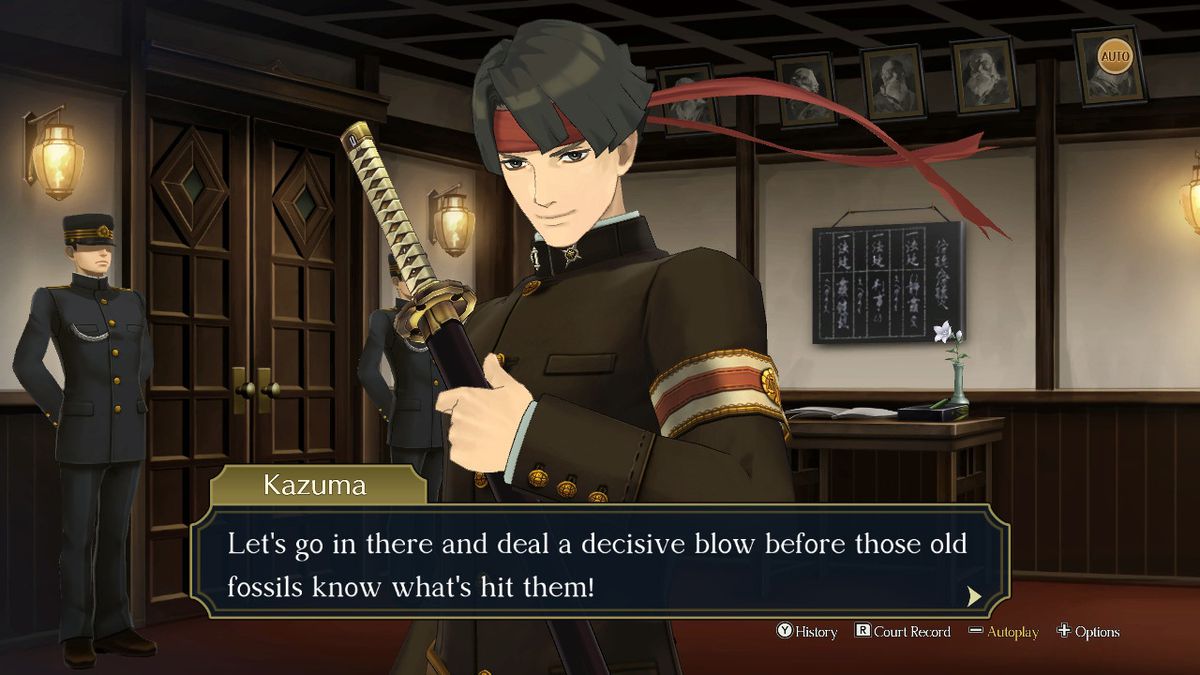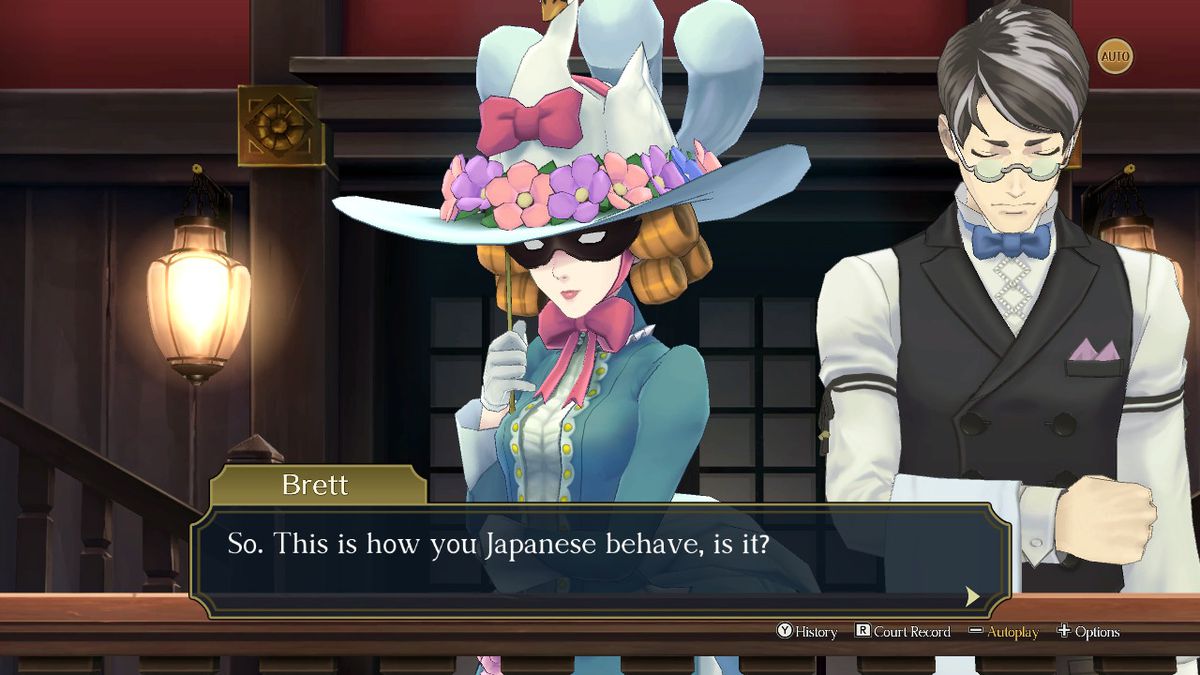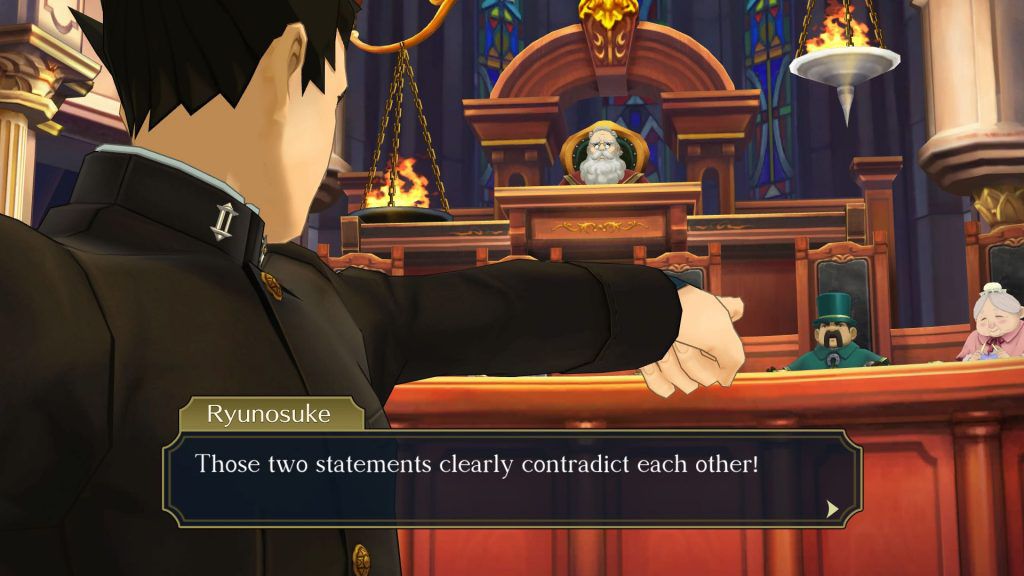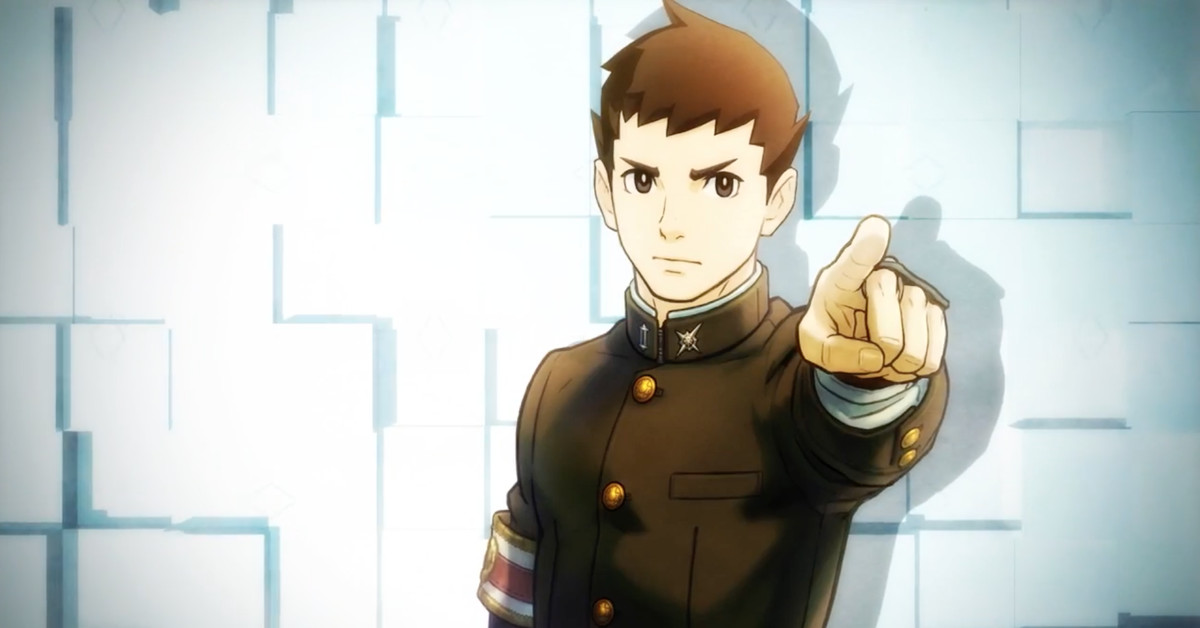The Ace Attorney series has always been concerned with the definition of justice. For the last 20 years, the games’ lawyer protagonists have defended wrongfully accused clients while attempting to tackle the corruption and unfairness of what is ultimately a broken legal system. They have questioned and explored what a fair outcome within those constraints looks like, and the moral responsibility of an individual working with them.
The Great Ace Attorney Chronicles, recently localized after five years as a Japanese-exclusive title, is a spinoff that takes place in England and Japan during the Victorian and Meiji era. (Though packaged as one game, it includes two games, The Great Ace Attorney: Adventures and The Great Ace Attorney 2: Resolve.) The protagonist Ryunosuke Naruhodo is canonically an ancestor of main series protagonist Phoenix Wright, but this isn’t really necessary to tie the games together. They already share enough of the same functional and thematic DNA.
It asks the usual questions about truth and justice. But its new setting, one heavily informed by the British and Japanese empires, casts those questions in a new light. In doing so, the game struggles to answer them convincingly, and muddles its own messages.
[Warning: The rest of this article contains full spoilers for the ending of The Great Ace Attorney Chronicles.]

Image: Capcom via Polygon
The Great Ace Attorney Chronicles is immediately critical of Britain and Japan’s relationship to it. Ryunosuke’s partner, Kazuma Asogi, is the main mouthpiece against the unequal treaties signed between the two countries, saying at one point that “our feeble government is scared of upsetting England’s policy makers.”
When Ryunosuke is accused of murder in the first case, an English woman called Jezaille Brett takes the stand. The culprits in opening Ace Attorney cases are always pretty obvious, giving the player the chance to learn the ropes, but The Great Ace Attorney Chronicles plays with this expectation. Jezaille’s appearance is more than a tutorial — it’s a thesis on what the game wants to say about the injustice of empire.
Jezaille is immediately and severely racist. She claims Japanese people are untrustworthy and unintelligent, and she’s particularly critical of the “vulgarity” of their language. Despite this, the judge and prosecutor fawn over her and England in general. When Ryunosuke begins making accusations, they criticize him for potentially damaging the fragile treaty between the two countries.
Ryunosuke is acquitted, but it’s heavily implied that Jezaille will get away with the murder. Though Ryunosuke might not be taking the fall, he comes away frustrated with how imperialist diplomacy obstructed justice and ultimately prevented the full truth from being revealed.

Image: Capcom via Polygon
Coming to value the truth above all else is an essential arc that unites all Ace Attorney protagonists. In the second game, Justice for All, Phoenix Wright gets the bad ending if the player continues asking for a not guilty verdict for his actually guilty client. In Dual Destinies, Apollo Justice leaves the team for a while, asking whether the truth is the same for everyone. Miles Edgeworth’s redemption arc starts with asking the judge to continue a trial he was about to win because he doesn’t believe the real story has come out, and his focus on this question continues through most of the rest of the series, including in his own spinoff. (This is my official plea for everyone to play both Ace Attorney Investigations games.)
What makes Ryunosuke unique is that his major barrier to exposing the truth isn’t a single case or person, it’s the entirety of the British Empire and its relationship to the growing Japanese one. This barrier is everywhere: Travelling to Britain, Ryunosuke experiences both casual and targeted racism. Like Jezaille, several characters make claims about the untrustworthiness of Japanese people, or comment cruelly on their appearance. His primary rival in the game, the prosecutor Barok van Zieks, uses slurs and openly admits to disliking all Japanese people. This racist mistrust is demonstrated to influence the decisions of the jury, although given the conceit of the game, this can only be taken so far, since Ryunosuke always needs to win for the player to continue.
Ryunosuke’s problems continue as he realizes that winning a case doesn’t necessarily mean finding the truth. Shortly after arriving in Britain, he is handed a case by the Lord Chief Justice defending a local Irish millionaire called Magnus McGilded. During the trial, it’s never clear to Ryunosuke or the player whether or not McGilded actually committed the crime. When Ryunosuke gets McGilded found innocent, he, like Phoenix and Edgeworth before him, asks for the trial to continue regardless in order to determine what really happened. Due to McGilded’s riches and influence, Ryunosuke’s request is denied.

Image: Capcom
In the Ace Attorney series, justice is synonymous with the full story of any given event coming out in a courtroom. Giving the protagonists the drive to unravel all the mysteries is handy when that’s what the player is working to do anyway. The games aren’t shy about targeting the overarching power structures that are to blame, but The Great Ace Attorney Chronicles struggles to apply that framework to something on the scale of an inherently unjust empire.
The British Empire is heavily criticized by the game in certain aspects, primarily legal corruption (like in the case of Jezaille Brett) and anti-Japanese racism. But it doesn’t look beyond these to the wider crimes of its empires. Though the Japanese characters experience racism and struggle with uneven diplomatic treaties, there’s never so much as a mention of people from Africa, India, or Korea who might show the full scope of colonization. Strangely, the only character who comes from an actually colonized country is McGilded, who is used as the face of British greed and corruption despite being Irish. The game is mostly concerned with Britain’s behavior at home, such as by using poor white Londoners to bring some class commentary. Most notably, plucky orphan pickpocket Gina Lestrade is repeatedly exploited by the city’s richest inhabitants, and her story is an engaging look at the issues facing the poor in the capital. For a game that places empire as the enemy and whose characters strive to examine the full story, The Great Ace Attorney Chronicles doesn’t go all the way in pursuing that same full truth.
The Great Ace Attorney Chronicles is, of course, a game about lawyers, so it’s not necessarily surprising that it focuses exclusively on how the law becomes a tool of corruption and oppression. But the ending really highlights the limits of not exploring the full range of the empire’s injustices. Throughout the duology, the corruption escalates, with Ryunosuke battling against more and more powerful characters. In the final case, he’s trying to remove the Lord Chief Justice, Mael Stronghart. There’s a lot of back and forth, but Stronghart eventually makes the argument that if he wasn’t allowed to completely manipulate the courts, London would descend into violent chaos. His speech gets the majority of the judiciary watching the trial on his side, and it seems like Ryunosuke is stuck, unable to dismantle the power structure itself.
Until Herlock Sholmes appears, says he’s got the Queen on the line, and that she’s heard everything and will get rid of Stronghart.

Image: Capcom
To emphasize how far out of left field this ending is, consider that Sholmes appears as a hologram, having apparently just invented such a thing, despite the fact that the rest of the game often hinges on characters being limited by Victorian-era technology. Similarly, while the rest of the game has slowly been building to demonstrate that the corruption goes all the way to the top, bringing in the Queen as the hero on the side of justice makes no sense. The game argues that the entire system is one of cascading failures with no chance of reform — except that its imperial figurehead is as just and moral as they come and will single-handedly right all the wrongs in the legal system.
The endings of Ace Attorney cases, especially the final ones in each game, are often goofy and wild, but their deus ex machinas follow a certain pattern. Ultimately, they argue that an individual attempting to do good under a system of injustice needs two things: perseverance and a good group of allies. Friendship and found family might not be able to dismantle systems of oppression, but they do make a difference in individual people’s lives.
So when a former rival or even a channeled spirit bursts into the courtroom with key evidence at the last minute, it makes perfect sense within that theme. It’s cheesy, but it’s always been the bright heart of Ace Attorney games. This happens several times throughout Chronicles. But in the very end of the game, it’s suddenly replaced with Queen Victoria’s girlboss moment. The ending sticks with the theme of having good allies that makes the games earnest and hopeful, but in doing so, it completely fails to tackle the core injustice it sets out to address.
It’s a shame, because The Great Ace Attorney Chronicles is a good Ace Attorney game. It’s funny and heartwarming and full of character in all the right ways. In drawing attention to the series’ themes through its setting, it actually made me appreciate the way those themes exist in the other games more. But by not tackling empire and injustice holistically, it creates a mismatch in focus and an ending that ultimately undermines its narrative.
Polygon – All
Source link
Related Post:
- The Great Ace Attorney Chronicles Shows its Cases With New Trailers
- The Great Ace Attorney Chronicles Gets New Trailer Showing One of Its Cases
- The Great Ace Attorney Chronicles E3 Trailer Focuses on Deduction
- The Great Ace Attorney Chronicles Review – The Final Verdict
- The Great Ace Attorney Chronicles will feature both familiar and new gameplay mechanics
- The Great Ace Attorney Chronicles Gets an Exciting Story Trailer & Gameplay Footage Showing Off New Mechanics
- Inside Capcom’s localization of The Great Ace Attorney Chronicles – PlayStation.Blog
- Capcom talks dubbing The Great Ace Attorney Chronicles during the pandemic
- The Great Ace Attorney Chronicles review
- The Great Ace Attorney Chronicles review — An interesting history
